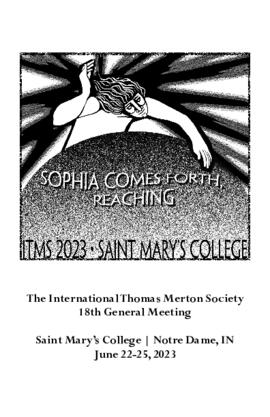Identity elements
Reference code
Name and location of repository
Level of description
Title
Date(s)
- 2023 (Creation)
Extent
This series is a virtual series with no physical records.
Name of creator
Name of creator
Name of creator
Content and structure elements
Scope and content
In this virtual series, there is a listing of papers and presentations for the 2023 ITMS conference. Conference description: "In his poem Hagia Sophia and other writings, Thomas Merton wrote of divine wisdom, often personified as Sophia. Representing both the Holy Spirit and the mystical idea of divine wisdom, the figure of Sophia played an important role in Thomas Merton’s spirituality and writing. This mystical image represents the divine in active terms, reaching into our souls and challenging us to new ways of living, of loving our neighbors, of standing for justice. Moreover, in Sophia Merton recognized an experience of God rendered in a feminine face. The significance of the divine feminine in Merton’s life and work connects aptly to the location of our gathering in 2023. Saint Mary’s College, a Catholic women’s liberal arts college, has long been a pioneering institution in women’s higher education, and intersected with Merton’s life in important ways. Merton corresponded with members of the Saint Mary’s community, including then-President Sr. Madeleva Wolff, and it was Saint Mary’s that first published Merton’s 1948 book What is Contemplation? More generally, Merton was shaped in important ways by women in his life — from his mother to the Baronness Catherine de Hueck Doherty to his longtime literary agent Naomi Burton Stone — and through his writings and correspondence engaged in extensive dialogue with women writers."

